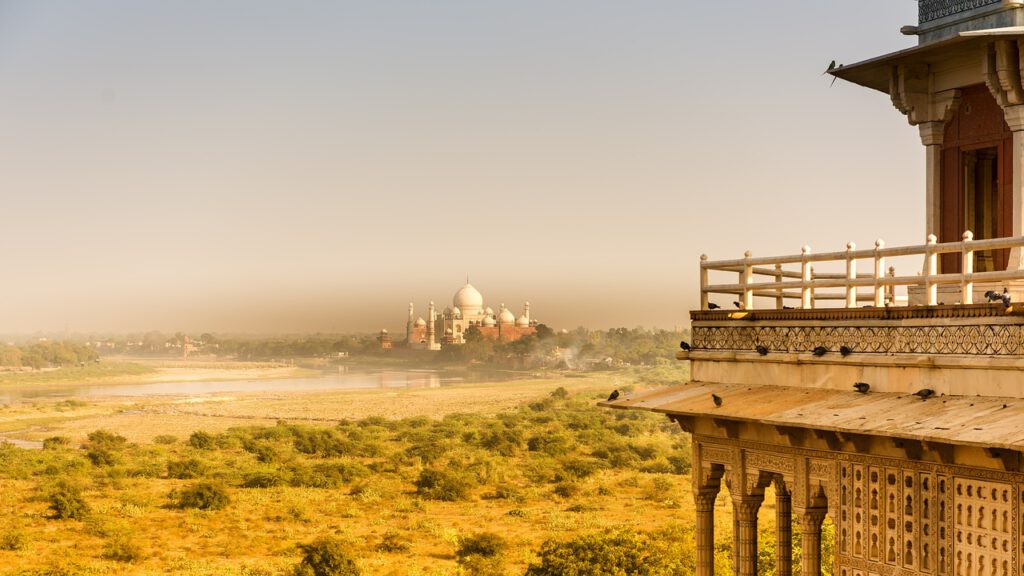5 Top-Rated Tourist Attractions in India

India is a lively land full of surprising contrasts that combines the traditional and modern worlds. India is the seventh largest country in the world by area, and the second-largest in terms of population. This rich land has witnessed centuries of diverse cultures and religions leave their mark. For travelers, there are many places to visit and spiritual encounters. Nature lovers will love India’s sun-kissed beaches, lush national forests, and fascinating wildlife sanctuaries.
The magnificent Taj Mahal, located in Agra, is just one of the many historical and spiritual treasures that visitors to this country can discover.
This list contains the best things to do in India, to make sure you get the most out your time.
1. The Taj Mahal, Agra
The Taj Mahal is India’s most prominent building. It is also the best-known symbol of the power of love. Named after Mumtaz Mahal the beloved wife of Emperor Shah Jahan and completed in 1631, it is one of the most beautiful mausoleums.
Many elements of Islamic design are incorporated into the Taj Mahal, including arches, minarets and an onion-shaped dome. The Taj Mahal is largely made from white marble, with delicate floral patterns and precious and semiprecious gemstones such as lapis lazuli and diamonds.
2. The Holy City of Varanasi
The holy city of Varanasi, a major pilgrimage site for Hindus, has been closely associated with the Ganges River, one the most significant religious symbols of the faith. Varanasi dates back to the 8th Century BC and is one of the oldest inhabited cities on the planet.
There are many reasons to visit it. Not least, you can explore the Old Quarter next to the Ganges, where you will find the Kashi Vishwanath Temple built in 1780. The New Vishwanath Temple is also worth a visit with its seven temples.
Hindus are very fond of bathing in Ganges. Many locations called “ghats”, or places where one can take a dip before praying, have stairways that lead to the Ganges.
Varanasi has more than 100 ghats. The largest are Dasashvamedh Ghat, and Assi Ghat. (The latter is located at the confluence between the Ganges-Asi rivers and is considered especially holy). Banaras Hindu University was established in 1917. It is known for its huge library of more than a million volumes and the magnificent Bharat Kala Bhavan Museum, which has fine collections of miniature paintings and sculptures as well as palm-leaf manuscripts and local history exhibits.
3. Harmandir Sahib: The Golden Temple of Amritsar
Amritsar was founded in 1577 by Ram Das and is a major hub for Sikh culture and history. Harmandir Sahib is the main attraction. It was opened in 1604 and is still known as the Golden Temple because of its stunning gold decorations. It is the holiest of India’s Sikh shrines, and attracts many Hindus. The temple was constructed in a mix of Hindu and Islamic styles. Its lower marble section features such flourishes like ornate inlaid animal and floral motifs. While the large dome, which represents a lotus flower and is a symbol for purity to Sikhs, it is the main attraction.
Visitors are impressed by the temple’s stunning design and the spiritual atmosphere it creates. This is enhanced by the constant chanting of prayers from the Sikh holy text that is broadcast throughout the complex. Visitors are invited to take part in the free 50,000 meals that the attraction offers each day.
4. The Golden City: Jaisalmer
The Golden City of Jaisalmer, named after the yellow sandstone that is used in its buildings, is a beautiful oasis of old architecture rising from the sand dunes.Thar Desert. The city was once a strategic outpost. Today it is full of magnificent old mansions and majestic gateways.Jaisalmer FortAlso known as the Golden Fort, this impressive structure from the 12th century rises high above the city.
The fortress has a number of palaces, temples and old homes. It also boasts 99 bastions, as well as massive gates that lead to the main courtyard, where you will find the seven-story-tall Seven-story-High Statue.Maharaja’s Palace. The palace was built in the early 1500s. It was expanded by successive rulers up to the 19th century.
5. The Red Fort, New Delhi
Shah Jahan established the Red Fort as the Mughal seat in 1648. This position was maintained until 1857. The magnificent, crescent-shaped Red Fort is located in New Delhi. It covers an area of over two kilometers and is surrounded with a large moat. Highlights include the Lahore Gate which is the fort’s main entrance, as well as the Delhi Gate which was once used by Emperor for ceremonial processesions.
You can also explore Chatta which is a covered bazaar from 17th-century selling jewelry, silk garments, souvenirs, food, and other items. The fort is open to the public, and guided tours can be arranged. This gives you a fascinating look into Shah’s life and times, as well as a peek inside the Hall of Public Audiences, a magnificent white marble building where he received his subjects.
[tp_widget][/tp_widget]
Abhijeet Johri



